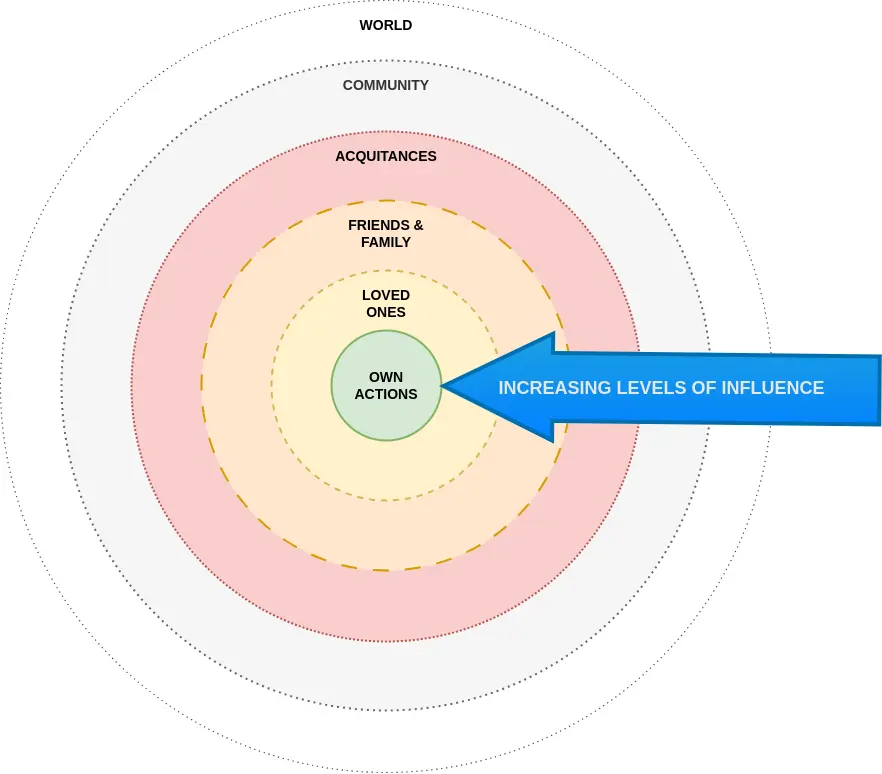Your circle of influence

Grant me the serenity, to accept the things I cannot change;
Courage, to change the things I can;
And wisdom, to know the difference.
Definition
The Circle of Influence is a concept that helps individuals focus their attention and actions on the things they can control or influence. By visualizing oneself at the centre of concentric circles, each representing different levels of influence, one can better understand and manage their impact on various aspects of their life and environment.
Key Components
The idea is simple: think of yourself as the centre of a set of circles of increasing size. Within each of these areas are things you can influence to various degrees. Deciding how far your personal circle of influence reaches, can help you focus your attention and actions to the things that are within your grasp to have an impact on.
- Personal Influence: The innermost circle represents the individual’s direct control, including their thoughts, behaviours, and immediate actions.
- Interpersonal Influence: The middle circle includes the individual’s influence on close relationships and direct interactions with others.
- Extended Influence: The outermost circle encompasses broader societal and environmental factors that the individual can influence to a lesser degree.
While we can certainly have an impact on the choices of others, the further these people are distant from us, the less effect you can have on them. As an example of this, ask yourself: How many strangers on the internet have you managed to convince to change their ways? Note that the circles of influence vary widely from one person to the next. A private citizen will have less influence over national politics than the prime minister will. But even this prime minister will have no impact on what the weather will be like tomorrow.
You can spend your whole life shouting at clouds, hoping the world will change for the better. Yet you’d likely have more impact by directing your attention to your own actions and to the people you interact with on a daily basis.
Background
Origin
The Circle of Influence concept is popularized by Stephen R. Covey in his book “The 7 Habits of Highly Effective People,” where he emphasizes the importance of focusing on what one can control to lead a more effective and fulfilling life. It also draws on the principles of Stoicism, and is closely related to the approach used by the Logotherapy school of psychology, as developed by Viktor Frankl.
Application
Draw a circle covering the paper, with your name at the centre. Reflect on what you can influence. As you do this, make sure you cover all the bases. It may be helpful for you to consider what you can influence in the following areas:
- Your work and tasks
- Your relationships
- Aspects of your own behaviour
- Aspects of company culture
- Aspects of company policy and procedures
Comparisons
The Circle of Influence can be compared to the concept of “Locus of Control” in psychology, which refers to individuals’ belief about the extent to which they can control events affecting them. Both concepts emphasize the importance of focusing on controllable factors but differ in their approach and visualization.
Examples
- Workplace Application: An employee identifies aspects of their job they can control, such as their work habits and interactions with colleagues, and focuses on improving these areas to increase job satisfaction and productivity. For instance, a software developer can control the quality of their code and the effort they put in, but not the decisions of the project manager.
- Personal Development: An individual struggling with stress draws their Circle of Influence, identifying that they can control their responses to stressful situations and choose healthier coping mechanisms.
